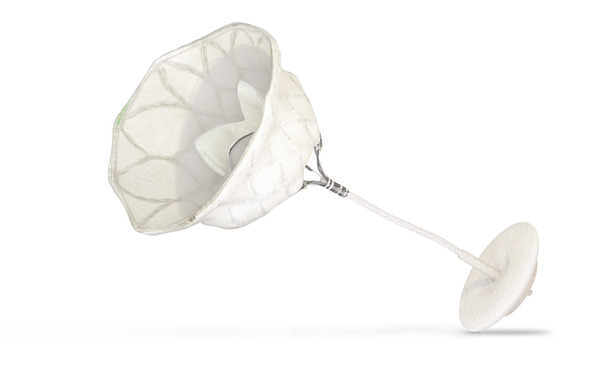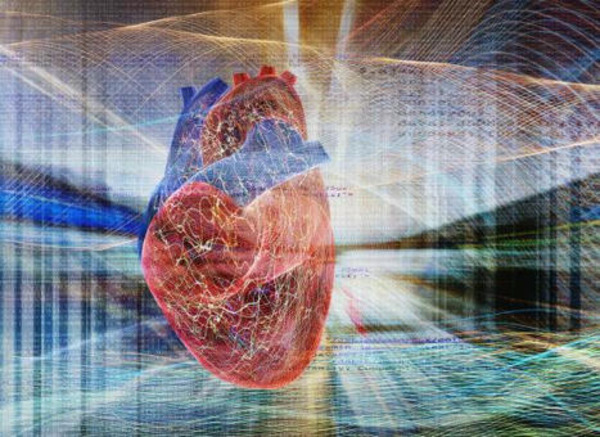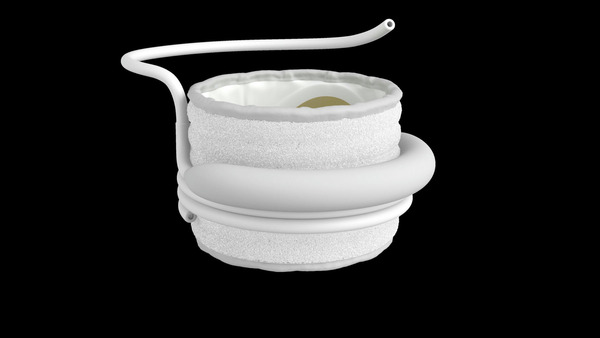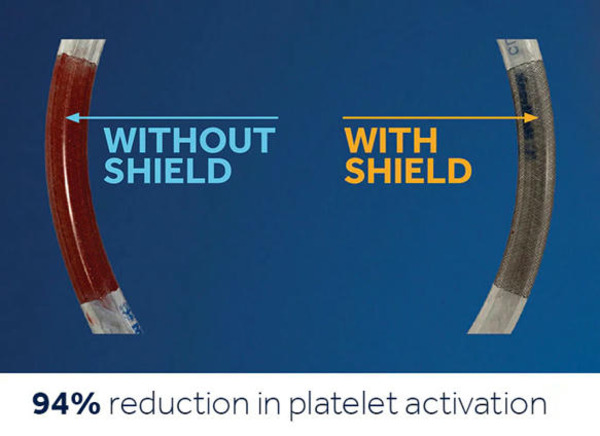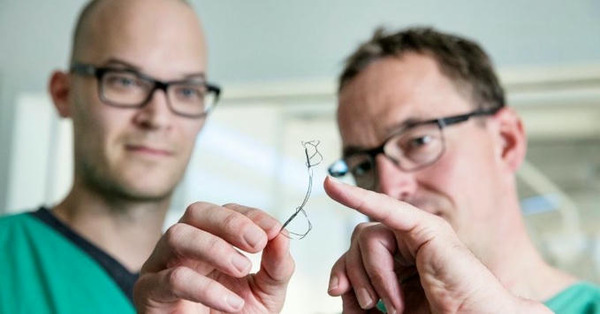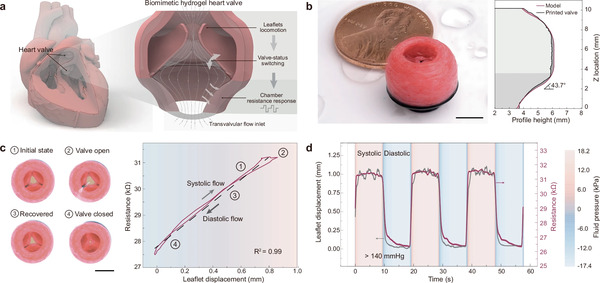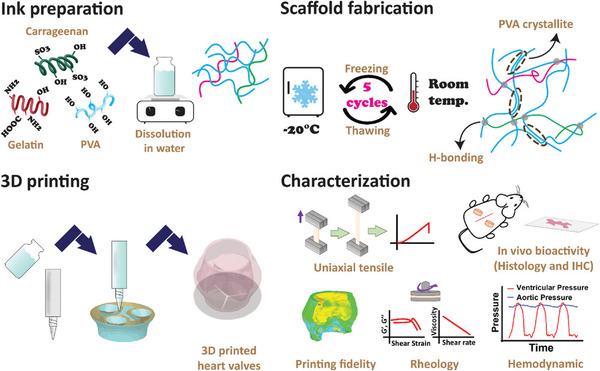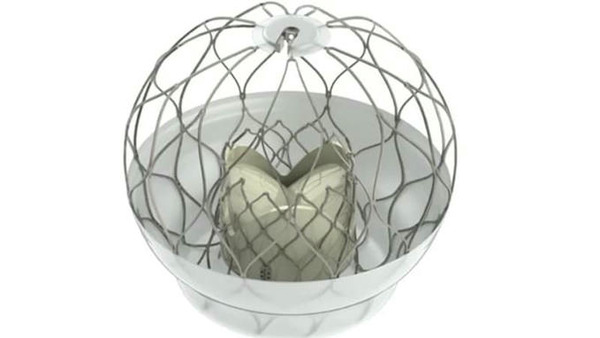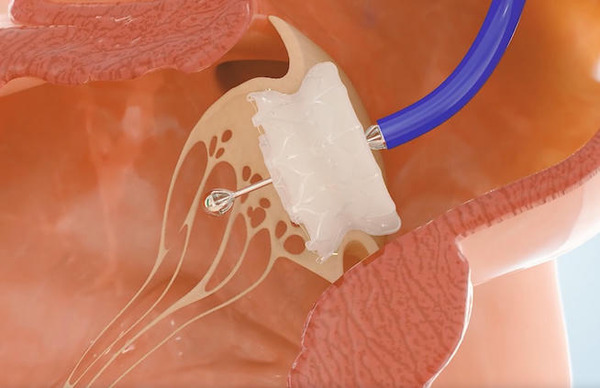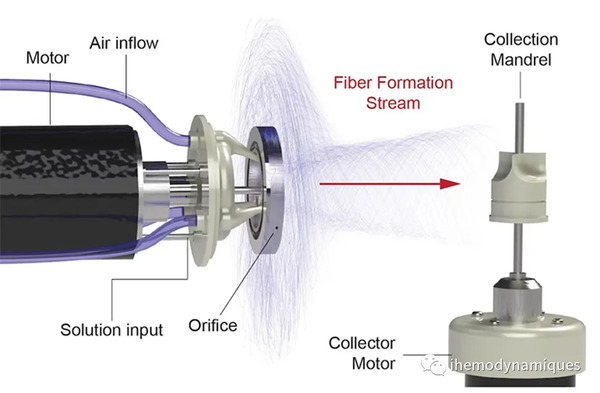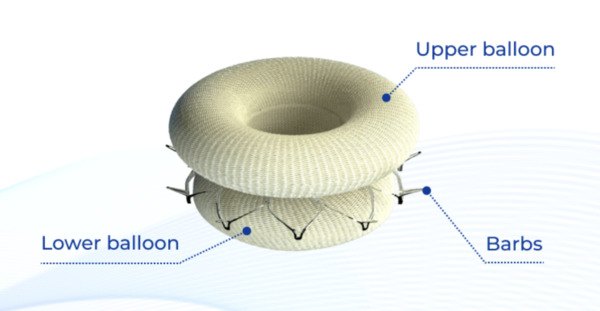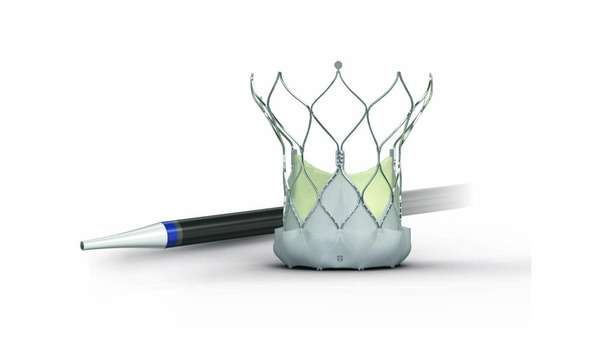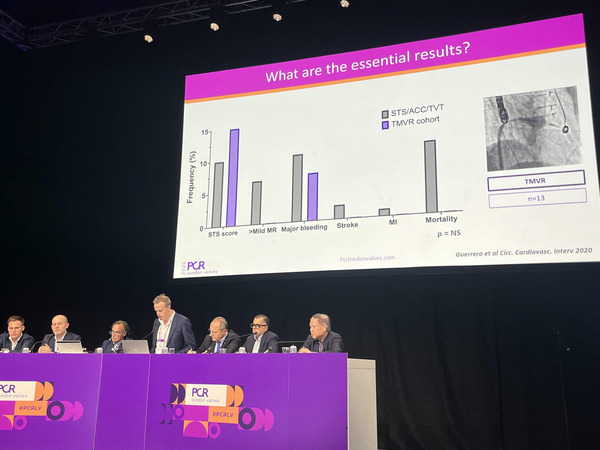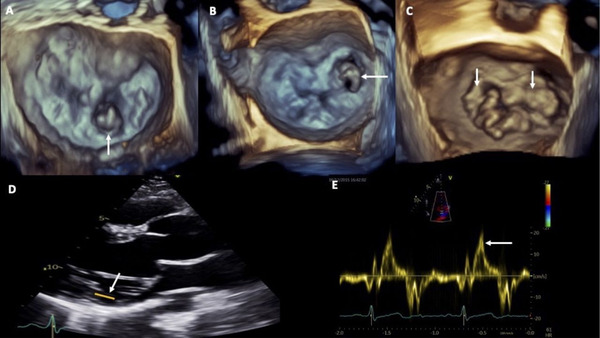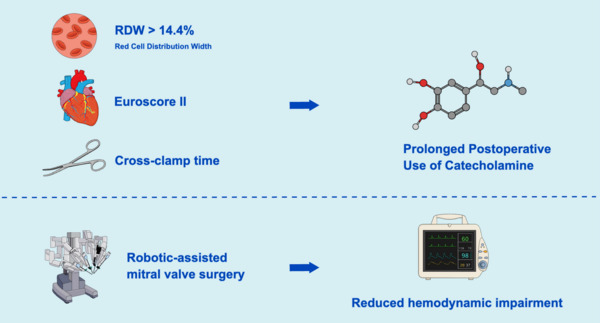 Your new post is loading...

|
Scooped by
Beeyond
June 3, 4:25 AM
|
The Tendyne system replaces mitral valves that are not functioning properly due to a buildup of calcium in the base of the valves, known as severe mitral annular calcification.

|
Scooped by
Beeyond
May 5, 2:18 AM
|
New data from a large, international registry showed balloon-assisted anterior mitral leaflet modification (BATMAN) was safe, effective, and resulted in shorter procedure times among patients undergoing transcatheter mitral valve replacement (TMVR). The data were presented today as late-breaking clinical research at the Society for Cardiovascular Angiography & Interventions (SCAI) 2025 Scientific Sessions.

|
Scooped by
Beeyond
April 21, 4:15 AM
|
Mitral regurgitation (MR) is a prevalent valvular heart condition often associated with poor clinical outcomes, especially when left untreated or inadequately managed. While percutaneous mitral valve repair (PMVR) with the MitraClip system, in conjunction with guideline-directed medical therapy, has demonstrated clinical and prognostic benefits in select patients with symptomatic severe MR, a considerable proportion of individuals continue to experience major adverse cardiovascular events (MACE)—including death or heart failure-related hospitalizations, within the first year following the procedure. Consequently, early identification of patients who are unlikely to respond favorably remains a critical clinical goal.

|
Scooped by
Beeyond
April 19, 1:00 PM
|
An artificial intelligence (AI) program trained to review images from a common medical test can detect early signs of tricuspid heart valve disease and may help doctors diagnose and treat patients sooner, according to research from the Smidt Heart Institute at Cedars-Sinai.

|
Scooped by
Beeyond
April 19, 12:55 PM
|
The Siegel valve encompasses an 8Fr delivery sheath allowing less invasive procedures and broader patient access, a Nickel-free valve allowing treatment, lack of foreshortening and intrinsic commissural alignment and dry porcine pericardial leaflets with anti-calcification treatment with the valve pre-mounted on the balloon.

|
Scooped by
Beeyond
April 19, 12:52 PM
|
The 100 cases include de novo aortic stenosis, valve-in-valve (ViV) patients and complex anatomies such as bicuspid aortic valve patients. Sixty five patients have successfully completed the primary endpoint measures of safety and efficacy, including haemodynamic benefit at 30-days post implant.

|
Scooped by
Beeyond
April 19, 12:46 PM
|
Edwards Lifesciences has announced that the company’s Sapien M3 mitral valve replacement system has received CE mark for the transcatheter treatment of patients with symptomatic (moderate-to-severe or severe) mitral regurgitation (MR) who are deemed unsuitable for surgery or transcatheter edge-to-edge (TEER) therapy.

|
Scooped by
Beeyond
March 26, 12:53 PM
|
Pipeline™ is the reference in flow diversion, with more than 10 years of experience and a very high number of clinical studies. These devices changed the treatment of aneurysms. By diverting flow away from the aneurysm neck and reconstructing the parent artery, they allow the flow to reapir its natural course.

|
Scooped by
Beeyond
March 24, 4:46 AM
|
Cardiac Dimensions, a leader in minimally invasive heart failure treatments, has raised $53M in an oversubscribed Series E funding round to advance its minimally invasive Carillon Mitral Contour System for heart failure treatment and expand global commercialisation efforts. Led by Ally Bridge Group, the investment also saw strong participation from existing backers, reinforcing confidence in the company’s innovative Carillon Mitral Contour System.

|
Scooped by
Beeyond
March 22, 7:15 AM
|
The manufacture of artificial heart valves is very challenging owing to their stringent functional requirements. The latest advances in 3D printing technologies hold great promise to revolutionise the manufacture of artificial heart valves. - Recent 3D printing innovations go far beyond the fabrication of anatomical moulds, and unlock unprecedented opportunities to manufacture exquisite architectures, hierarchical bioprinting of cells, complex multi-material assembly, and the creation of biomimetic structures.
- This provides new avenues to enhance the functionality of artificial heart valves with respect to hydrodynamics, durability, biocompatibility, and the ability to be implanted via a minimally invasive transcatheter procedure.

|
Scooped by
Beeyond
March 22, 7:13 AM
|
Hydrogel-based soft machines are promising in diverse applications, such as biomedical electronics and soft robotics. However, current fabrication techniques generally struggle to construct multimaterial three-dimensional hydrogel architectures for soft machines and robots, owing to the inherent hydrogel softness from the low-density polymer network nature. Herein, we present a multimaterial cryogenic printing (MCP) technique that can fabricate sophisticated soft hydrogel machines with accurate yet complex architectures and robust multimaterial interfaces.

|
Scooped by
Beeyond
March 22, 7:09 AM
|
Congenital and acquired valvular heart diseases (VHDs) are significant causes of mortality worldwide. With valve replacement being the primary solution for VHD, current options display shortcomings, including calcification, thrombogenicity, and hemodynamic alteration, leading to repetitive surgeries. Tissue engineering, however, has shown great potential for fabricating heart valves (HVs) with fewer complications. Here, a series of inks are developed, combining poly(vinyl alcohol), gelatin, and carrageenan for 3D printing of tissue-engineered heart valves (TEHVs). The inks/hydrogels are investigated to characterize their physico-chemical, morphological, mechanical, and rheological characteristics. In vitro and in vivo biocompatibility, immune response, hemolysis, and thrombogenicity of the inks/hydrogels are also evaluated.

|
Scooped by
Beeyond
March 11, 6:50 AM
|
Le dispositif a l’avantage de pouvoir bénéficier aux patients présentant des calcifications sur les feuillets de la valve mitrale. « Des patients inéligibles au TEER [réparation transcathéter bord à bord de type Mitraclip, ndr] et pour lesquels il n’y a pas vraiment d’option », a rappelé le Dr Sebastian Ludwig (University Heart & Vascular Center Hamburg, Hambourg, Allemagne), lors d’un échange en fin de présentation.

|
Scooped by
Beeyond
March 10, 4:21 AM
|
Capstan Medical today said it has successfully completed its first in-human, robot-assisted transcatheter mitral valve replacements. The Santa Cruz, Calif.-based company claimed that it was “the first time a minimally invasive robotic structural heart platform has been used in clinical practice, successfully delivering a novel mitral valve into two human patients.”

|
Scooped by
Beeyond
February 17, 6:10 AM
|
Cor triatriatum dexter (CTD) is an uncommon congenital anomaly consequent to an abnormal separation of the atrium during embryological development, determining the persistence of the fibromuscular membrane dividing the right atrium. Based on the severity of the obstruction determined by the membrane, the clinical signs may be silent or appear as heart failure, with consequent ascites, and if there are other associated congenital cardiac anomalies, they could manifest as cyanosis or sudden death. The aim of the present review is to give a professional perspective, considering the defect from different points of view.

|
Scooped by
Beeyond
February 13, 4:16 AM
|
Researchers at Harvard University have developed a technique that can make a biomaterial heart valve in minutes. The method is called “Focused Rotary Jet Spinning,” and the researchers describe it as “a marshmallow machine with a hairdryer at the back.” Basically, this technique uses air spray to direct the polymer fibers to a heart valve-shaped frame. This forms a porous scaffold that allows heart cells to enter and grow. These formed structures also have mechanical properties that serve as unidirectional valves within the heart. These scaffolds contain nanoscale signals that stimulate cell entry and proliferation, with the ultimate goal of gradually replacing biological material scaffolds by cells to achieve heart valve regeneration.

|
Scooped by
Beeyond
December 7, 2024 1:22 AM
|
The Valysnc system comprises two highly compliant balloons, made of a flexible deformable material that can expand to fit the surrounding valve anatomy. The system is designed to be delivered transeptally, with an atrial balloon expanded and lowered onto supra-annular plane of the mitral valve. Afterwards a second balloon is secured in the ventricle, held in place by a series of barbs or arms.

|
Scooped by
Beeyond
December 7, 2024 1:19 AM
|
Valvosoft is designed to non-invasively restore leaflet mobility in a stenotic aortic valve and widen the valve opening to relieve patient heart failure symptoms. High-intensity focused ultrasound waves micro-fracture calcification embedded in aortic valve leaflets without damaging tissue. The treatment is designed to be repeatable over time, as needed, to manage disease progression.

|
Scooped by
Beeyond
December 7, 2024 1:05 AM
|
The company has described this the largest valve size, supplied through the smallest delivery system available on the NHS, offering flexibility, accuracy, and stability in a large TAVI valve platform and is being used at King’s College Hospital in London.

|
Scooped by
Beeyond
December 7, 2024 1:03 AM
|
Whether the educational opportunity that is afforded by a live case justifies any potential safety risk to the patient continues to be a source of debate, Allen said, prompting the analysis looking at procedural safety among 115 live cases. Their researched comprised transcatheter aortic valve implantation (TAVI) and mitral and tricuspid procedures from three high-volume centres over a 14-year period. Researchers compared safety outcomes from the live cases to corresponding clinical trials and real-world daily practice.

|
Scooped by
Beeyond
November 11, 2024 5:22 AM
|
Degenerative mitral valve disease is common. Up to a quarter of patients with degenerative mitral valve disease may be asymptomatic despite having severe valve regurgitation. Current guideline indications for intervention in asymptomatic patient are centred on left ventricular dimensions and ejection fraction and may include consideration in atrial fibrillation, pulmonary hypertension and those with left atrial dilatation. However, despite intervention according to these recommendations, patients remain at risk of post-operative heart failure and mortality.

|
Scooped by
Beeyond
October 27, 2024 3:37 PM
|
Increasing adoption of non-resection valve repair in Barlow's disease has been observed in recent years. At mid-term follow-up, the clinical and echocardiographic results of MV repair for Barlow's disease were very good with low risk of mitral valve reintervention. At this time point, the results of non-resection techniques were comparable to the “gold standard” resection techniques. Monitoring of the long-term performance of non-resection techniques is warranted before definitive conclusion can be drawn.

|
Scooped by
Beeyond
October 14, 2024 3:39 PM
|
The trial will enroll patients with moderate-to-severe or severe mitral regurgitation (MR) who are unsuitable for surgery or transcatheter edge-to-edge repair (TEER). The trial is designed with two separate non-randomised cohorts, which include moderate/severe mitral annular calcification (MAC), and a primary cohort that will include patients with no or mild MAC.

|
Scooped by
Beeyond
October 7, 2024 5:11 AM
|
In the RESHAPE-HF2 trial (NCT02444338) on which Butler is an investigator, adding mitral transcatheter edge-to-edge repair (M-TEER) to medical therapy for moderate to severe functional mitral regurgitation led to a lower rate of initial or recurrent hospitalizations for heart failure or cardiovascular death and a lower rate of total hospitalizations for heart failure at 24 months.1 Patients also showed better health status at 12 months following transcatheter mitral-valve repair compared with those receiving medical therapy alone.

|
Scooped by
Beeyond
September 30, 2024 11:14 AM
|
Elevated RDW has emerged in cardiac surgery as a potential means of preoperative risk stratification with the capacity to predict short- and long-term postoperative mortality, acute kidney injury, and postoperative atrial fibrillation. The question as to whether perioperative hemodynamic instability may be predicted by such a marker remains a topic of ongoing debate. The aim of this study was to explore the relationship between preoperative RDW and prolonged postoperative catecholamine use in minimally invasive mitral valve surgery.
|

Curated by Beeyond
BEEYOND is a consulting company in the field of disruptive innovation, accompanying established companies on out-of-the-core growth strategy, from creation of new concepts to product launch. Reach us at: contact@beeyond.fr.
|

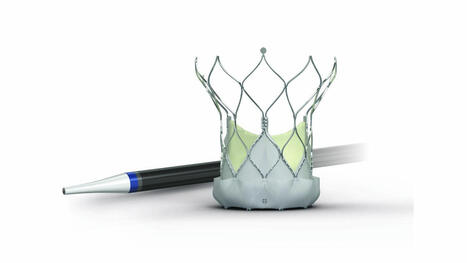


 Your new post is loading...
Your new post is loading...
